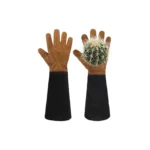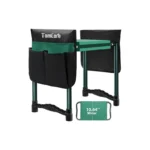If you’ve ever tried splitting firewood with a dull or poorly made axe, you know the frustration—and the arm strain—that comes with it. Whether you’re stocking up for winter, prepping your campsite, or just love the satisfaction of a clean split, having the best axe for splitting wood can make all the difference.
A quality splitting axe isn’t just about brute force—it’s about smart design. The right tool helps you work faster, stay safer, and get the job done without breaking a sweat (or your back). That’s why we’ve rounded up the top axes that bring performance, durability, and value straight to your backyard or cabin. Let’s chop into it.
Fiskars X27 Super Splitting Axe, 36″

The Fiskars X27 is a powerhouse built for serious wood splitting. With its 36-inch length and shock-absorbing handle, it’s perfect for medium to large logs. The forged steel blade stays sharp and delivers exceptional striking power—making every swing feel efficient and satisfying. The balance and weight distribution are engineered for deep, clean splits every time.
Pros:
- Long 36″ handle for maximum leverage
- Durable shock-absorbing FiberComp handle
- Forged carbon steel blade holds its edge
- Lightweight but incredibly powerful
Cons:
- Too long for smaller users or tight spaces
Best for: Homeowners who split large quantities of wood and want performance and comfort in one tool. What makes it stand out is its excellent balance of power, precision, and durability.
ESTWING Special Edition Fireside Friend – 14″ Wood Splitting Maul
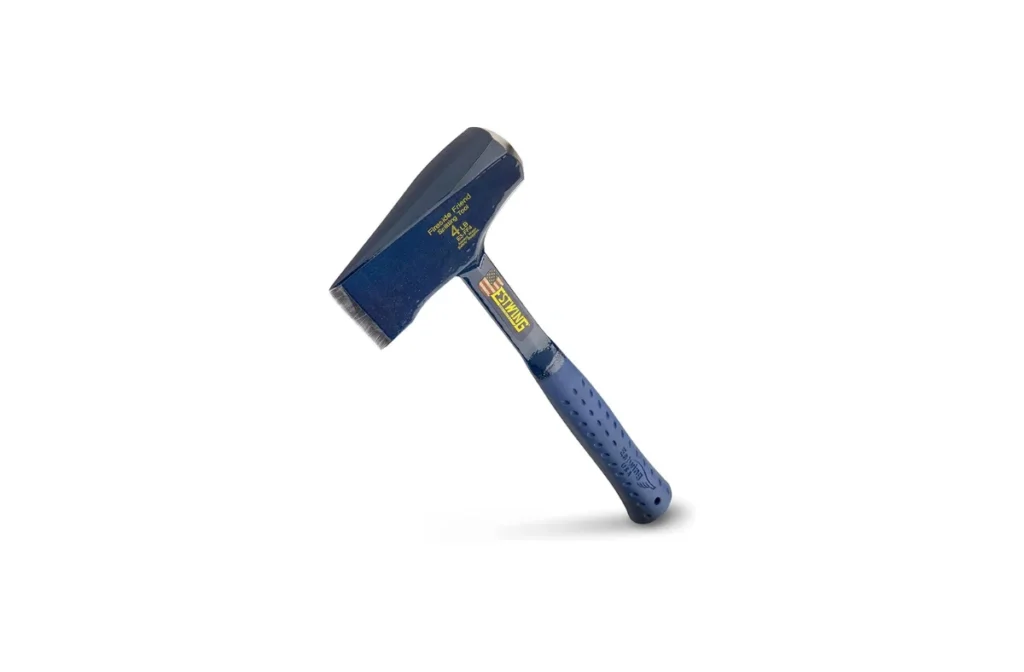
Compact yet mighty, the ESTWING Fireside Friend is a 14-inch wood splitting maul designed for smaller splitting jobs and kindling. It’s forged from a single piece of steel and topped with a gorgeous genuine leather grip, offering a premium feel and sturdy swing. This maul is known for being durable and highly effective at close-range chopping.
Pros:
- One-piece forged steel for unbeatable strength
- Genuine leather handle for a stylish, firm grip
- Ideal for splitting smaller logs or kindling
Cons:
- Not suitable for large logs
- Some users may prefer a longer handle
Best for: Campers and occasional wood splitters who need a reliable, compact tool. It stands out for its size-to-power ratio and rugged design.
INTERTOOL 36-Inch Wood Splitting Maul (HT-0275)
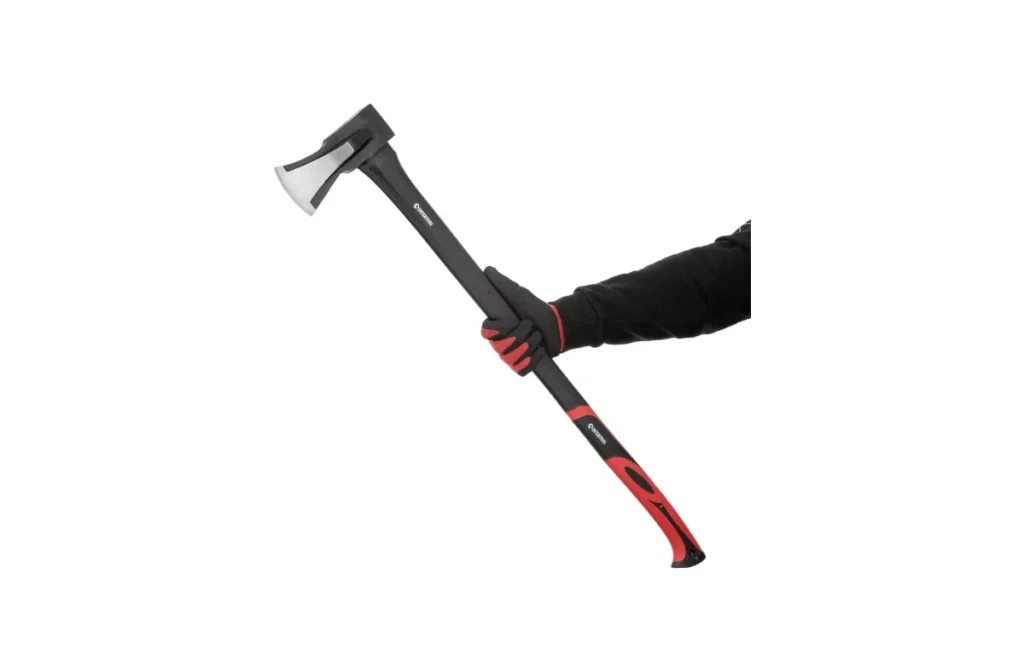
The INTERTOOL HT-0275 is a heavy-duty 36-inch splitting maul built for firewood warriors. This axe features a shock-absorbing fiberglass handle and a wide, wedge-style head that powers through logs. It also comes with a sheath for safe storage. Its full-sized length offers excellent control and splitting force.
Pros:
- 36″ handle for serious chopping power
- Wedge-shaped blade for effective splitting
- Fiberglass handle reduces vibration
- Protective sheath included
Cons:
- On the heavier side for some users
- Handle grip could be more textured
Best for: Those dealing with dense or thick logs. It’s great for people who want a robust, no-nonsense splitting axe that comes ready to work.
LEXIVON 36″ Wood Splitting Axe (LX-V36S)
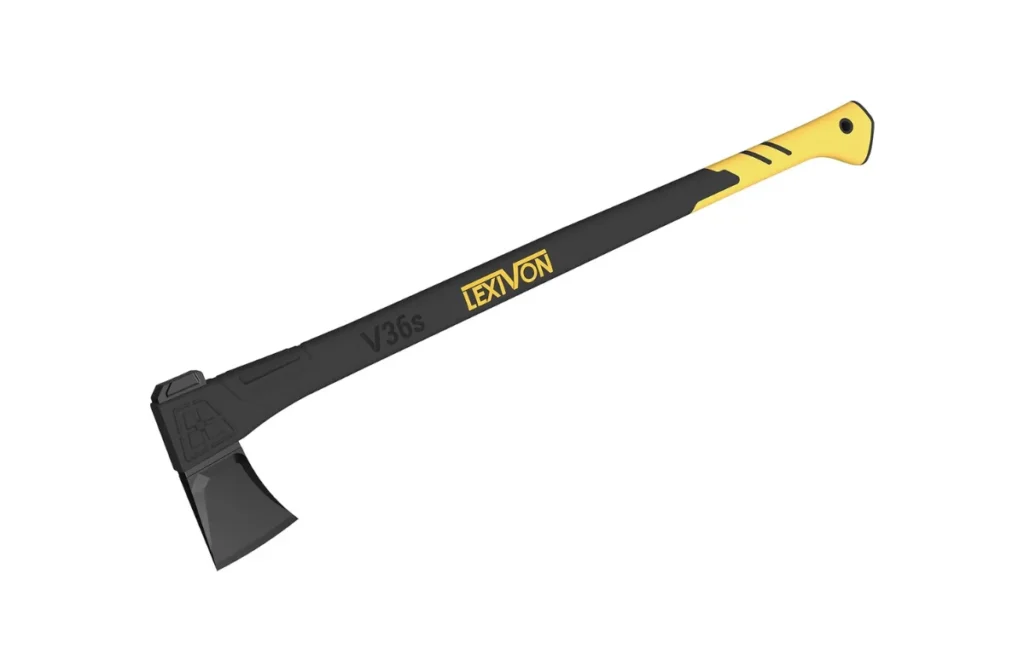
The LEXIVON 36-inch splitting axe is designed for those who demand both performance and comfort. With its Grade-A carbon steel blade and reinforced fiberglass handle, this axe tackles tree-felling and log-splitting with ease. The ergonomic grip helps prevent hand fatigue, even during extended use.
Pros:
- Grade-A carbon steel blade stays sharper longer
- Non-slip ergonomic handle for comfort
- Durable fiberglass core for impact resistance
- Great for both splitting and chopping
Cons:
- Not the lightest option available
- Sheath is basic
Best for: DIYers and outdoorsmen who want a multi-use axe with high-quality materials. Its standout feature is the combination of strength and user-friendly grip.
KSEIBI Small Outdoor Camp Hatchet
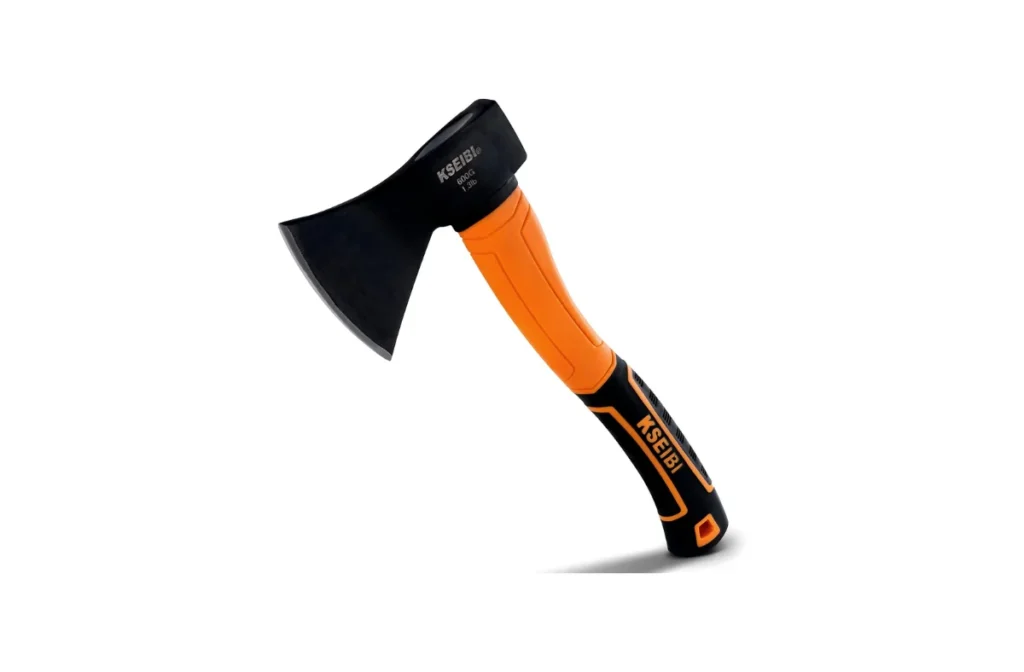
The KSEIBI hatchet is perfect for camping, kindling, and light splitting tasks. Compact and lightweight, it features a forged steel blade and anti-slip handle for confident swings. It’s easy to carry, great for beginners, and won’t break the bank.
Pros:
- Compact and lightweight
- Forged steel blade for long-lasting edge
- Anti-slip grip reduces hand strain
- Affordable
Cons:
- Not suited for large logs
- Lacks sheath
Best for: Campers, hikers, and those who need a backup axe. It stands out for portability and convenience.
Coleman Axe with Steel Head & Non-Slip Handle
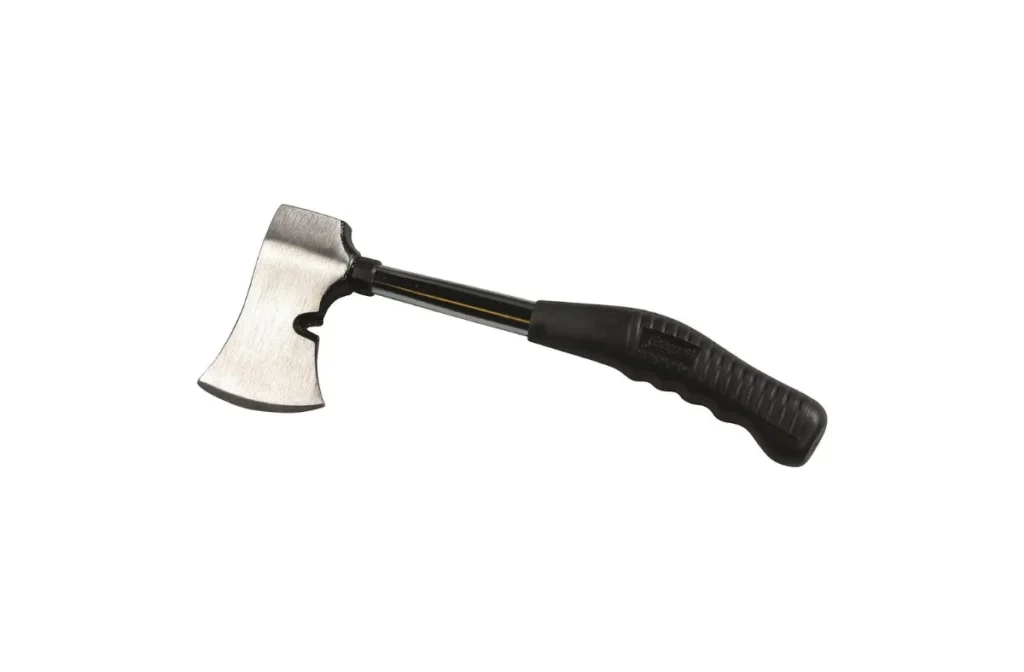
The Coleman Axe is a versatile tool for chopping firewood, hammering stakes, and general outdoor work. With a steel head and non-slip handle, it’s simple, tough, and reliable. It doesn’t have the bells and whistles of others, but it gets the job done for casual users.
Pros:
- Multi-use design for camping and yard work
- Non-slip grip for added safety
- Strong steel head
Cons:
- Not optimized for large splitting tasks
- Shorter handle reduces leverage
Best for: Casual users and campers who need an affordable, reliable tool for light splitting and utility tasks. Its main advantage is its overall versatility.
Comparison
| Product Name | Key Feature | Specs | Pros |
| Fiskars X27 | Shock-absorbing handle | 36″, Forged Steel Blade | Long handle, efficient, lightweight |
| ESTWING Fireside Friend | One-piece steel build | 14″, Leather grip | Durable, stylish, compact |
| INTERTOOL HT-0275 | Wedge head + fiberglass handle | 36″, Sheath included | Powerful, safe, anti-vibration |
| LEXIVON LX-V36S | Grade-A carbon steel | 36″, Ergonomic handle | Multipurpose, sharp, durable |
| KSEIBI Camp Hatchet | Lightweight for kindling | Small, Forged Steel | Portable, affordable |
Buying Guide – What to Consider Before Buying the Best Axe for Splitting Wood
When shopping for a splitting axe, the size of the logs, frequency of use, and your strength level should all guide your choice. Here are the key things to look for:
- Handle Length: Longer handles (around 36″) provide better leverage and power for splitting large logs. Shorter handles are better for kindling or portability.
- Blade Material: Forged or carbon steel is best. It holds a sharp edge longer and powers through dense wood.
- Weight: Heavier axes provide more splitting force but can cause fatigue. Go lighter if you’re new or only splitting occasionally.
- Grip & Comfort: Look for ergonomic, non-slip grips. Shock absorption features reduce wrist and hand strain.
- Extras: Some axes come with sheaths for storage or safety. Others double as multi-use tools.
FAQs
What’s the difference between a splitting axe and a chopping axe?
A splitting axe is designed to split wood along the grain, while a chopping axe cuts across the grain (like for felling trees). The blade shape and weight are optimized for different purposes.
Do I need a maul or an axe for splitting wood?
A maul is heavier and better for thick, tough logs. An axe is lighter and faster for smaller or medium-sized wood. Many homeowners prefer axes unless they deal with large volumes.
How often should I sharpen my splitting axe?
It depends on usage, but typically every few weeks for frequent use. A sharp blade splits easier and is safer to use.
Are fiberglass handles better than wood?
Fiberglass handles are more durable, weather-resistant, and often come with shock absorption. Traditional wood handles offer classic feel but may need more care.
Final Thought
Choosing the best axe for splitting wood comes down to your needs. If you’re regularly splitting big logs, the Fiskars X27 is hard to beat—it’s powerful, lightweight, and built to last. For smaller jobs or camping, the ESTWING Fireside Friend offers unbeatable durability in a compact form. Want a budget-friendly all-rounder? The INTERTOOL HT-0275 delivers both performance and value.
Before you go, you might also want to check out these helpful guides for outdoor tools and gear:
Disclosure
As an Amazon Associate, we earn from qualifying purchases. This means we may earn a small commission when you click through and make a purchase—at no extra cost to you.




